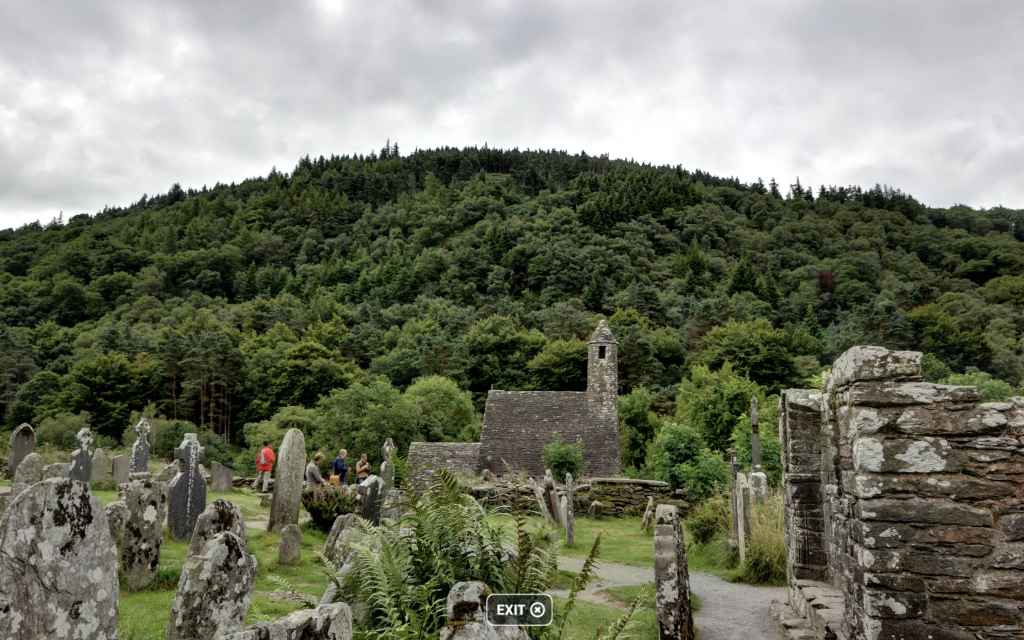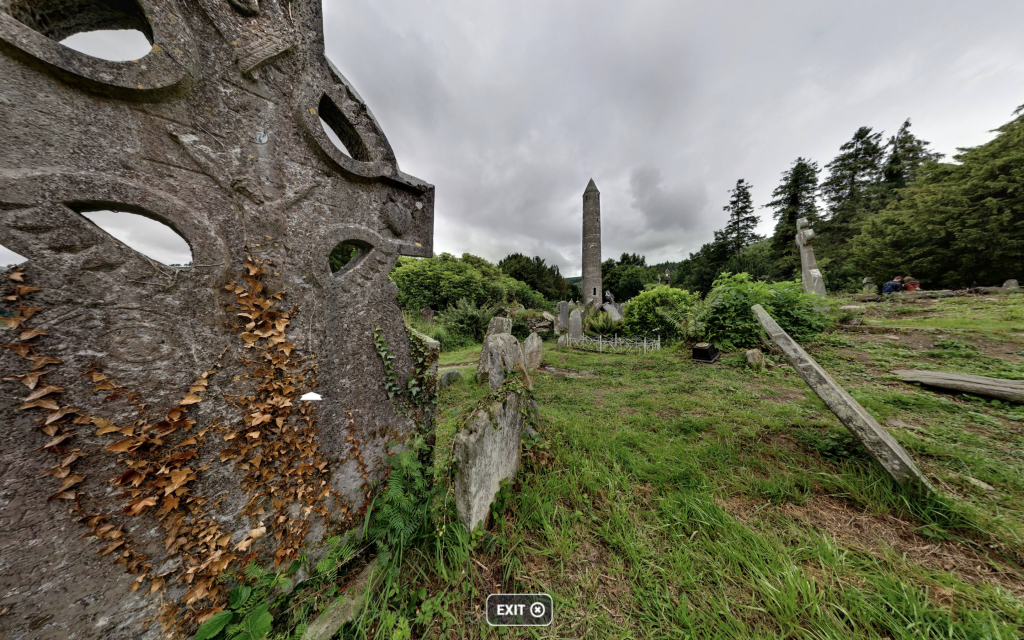Viewing a sector of the Glendalough valley displayed in 360cities is mesmerizing. As you put on Virtual Reality goggles, you enter what seems to be the most vivid cemetery. The stonework of the tombstones and nearby collapsed buildings immediately creates a medieval era vibe. The place is breathtaking, even from looking at it with 70 dollar cheap virtual assisted equipment.
The gravestones themselves appear to have carvings of the Christ on them, highlighting the Christian origins of the place. Unclear when the stones were created could date back to the 6th century, but they have survived well. Even the small detailed carvings.
The site displayed is the home of the dead. Unlike most peoples graves —who eventually stop receiving visitors and get forgotten in history as centuries pass— the dead buried at Glendalough are never alone and always have company (tourists) despite the era they died in as seen in the pictures above and below.

The graveyard is surrounded by trees many trees and the place is green, which is my favorite. I wondered how such place could be so rich in trees but I remembered reading Dublin: A Crucial History by Siobhan Kilfeather where she describes the Wicklow Mountains stating “… in the eighteenth century, the Dublin gentry built villas throughout the area and the Royal Dublin Society awarded grants to landowners for the planting of native trees” (16). With further light research, I uncovered that between 1766 and 1806 approximately 40-55 million trees were planted in Ireland on foot of the Society’s initiatives. Though it’s difficult to predict what those “grants” were (maybe currency) that’s still a lot of grants being handed out to the locals. This raises a question of how the economy changed with these rewards for planting trees (if it was money) or how the reward benefited the natives that Glendalough ended up being the greenest place I have seen.

